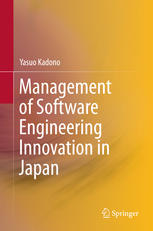

Most ebook files are in PDF format, so you can easily read them using various software such as Foxit Reader or directly on the Google Chrome browser.
Some ebook files are released by publishers in other formats such as .awz, .mobi, .epub, .fb2, etc. You may need to install specific software to read these formats on mobile/PC, such as Calibre.
Please read the tutorial at this link: https://ebookbell.com/faq
We offer FREE conversion to the popular formats you request; however, this may take some time. Therefore, right after payment, please email us, and we will try to provide the service as quickly as possible.
For some exceptional file formats or broken links (if any), please refrain from opening any disputes. Instead, email us first, and we will try to assist within a maximum of 6 hours.
EbookBell Team

0.0
0 reviewsThis book assesses the achievements of the software engineering discipline as represented by IT vendors in Japan in order to deepen understanding of the mechanisms of how software engineering capabilities relate to IT vendors’ business performance and business environment from the perspective of innovation and engineering management. Based on the concepts of service science and science for society, the volume suggests how to improve the sophistication of services between the demand side, i.e., IT user companies, and the supply side, i.e., IT vendors, simultaneously.
The author and his colleagues developed a structural model including innovational paths, such as service innovation, product innovation and process innovation, and a measurement model including the seven software engineering capabilities: deliverables, project management, quality assurance, process improvement, research and development, human resource development and customer contact. Then they designed research on software engineering excellence and administered it with the Japanese Ministry of Economy, Trade and Industry and Information-Technology Promotion Agency. Through statistical analyses of the results, they found that human resource development and R&D are significant fundamental conditions to improve the quality of the deliverables and that IT firms with high levels of deliverables, derived from high levels of human resource development, quality assurance, project management and process improvement, tend to sustain high profitability. In addition, they developed a measurement model based on Porter’s five forces and Barney’s resource-based view. A regression tree analysis suggested that manufacturer spin-off vendors tend to expand business with well-resourced R&D, whereas user spin-off vendors tend to depend heavily on parent company demand.